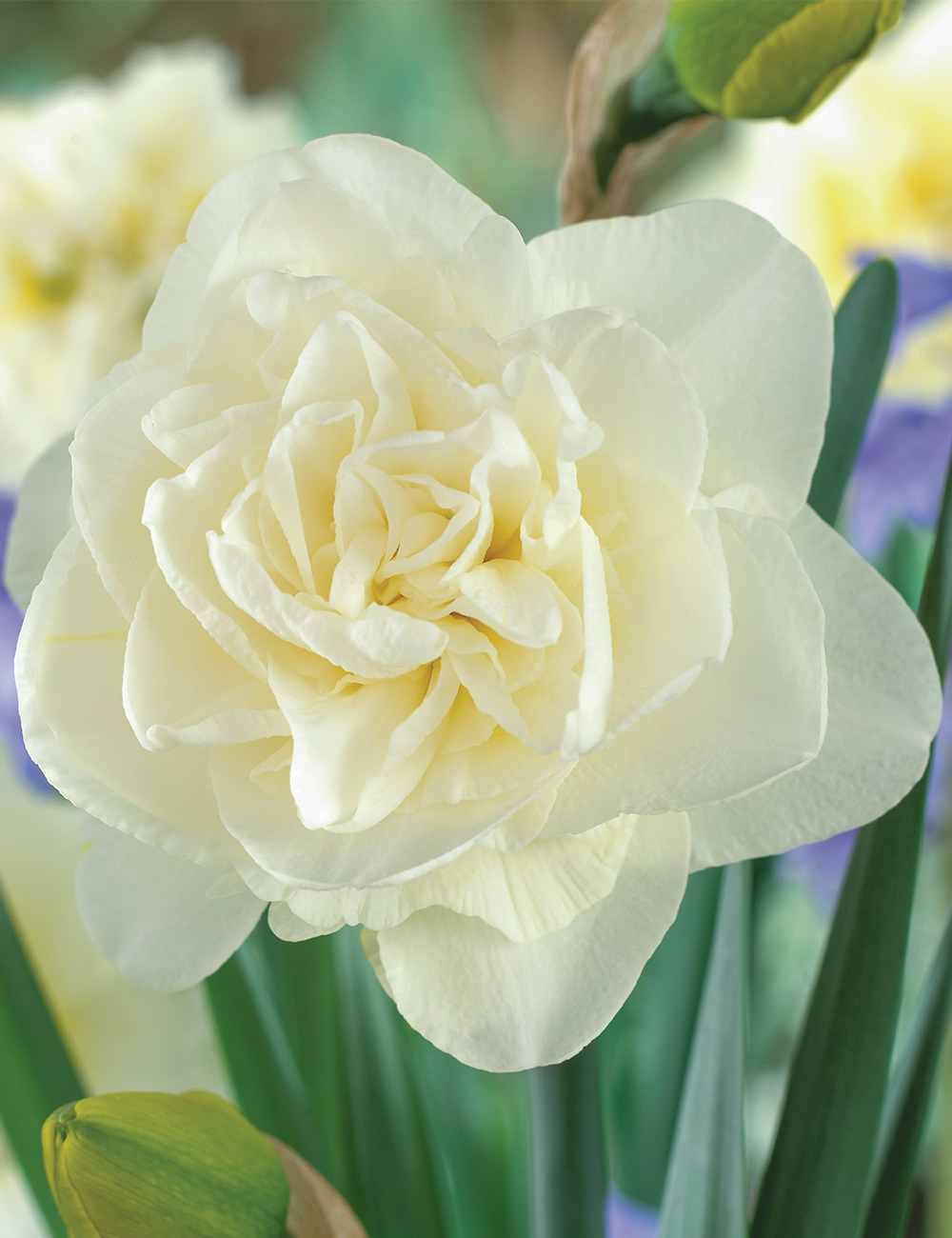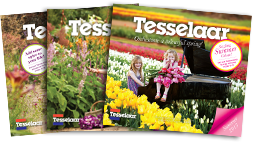
Double Daffodil 'Obdam'
Botanical Name: Scented/Jonquil: Narcissus tazetta. Garden: N. pseudonarcissus. Snowflakes: Leucojum aestivum. Hoop Petticoat: N. bulbocodium. Pheasant Eye N. poeticus.
Family: Amaryllidaceae
Plant Type: Bulb
Size (HxW): Miniature: 15-30cm x 5-10cm.
Standard: 30-70cm x 10-15cm. Hoop Petticoat: 10-20cm x 5-10cm
Depth & Spacing: Plant 2-3 times the height of the bulb deep: Miniature: 5-10cm deep and 10-12cm apart. Standard: 15-20cm deep. Space the bulbs 10-15cm apart. We list the spacing as the width the bulb grows, however we think bulbs look better in generous proportions, so when we plant them we usually put two or three to a hole for a more immediate impact. This can mean you need to divide them earlier. In pots we suggest planting so they are almost touching.
Soil: Moderately fertile to humus rich, well drained soil is ideal.
Aspect: Full sun to semi shade
Climate: Cool to Subtropical. The best daffodils for warm climates are early flowering varieties - because they flower before the heat sets in and therefore last longer. Jonquils are stronger growing than daffodils so are more likely to succeed in warmer climates. They won’t do as well as they do in their ideal climate but they will put on a decent show and with so many microclimates it is worth having a go to satisfy your curiosity.
Frost: Hardy
Water: Water in to establish, then only if rainfall is low during active growth. Keep relatively dry during dormancy.
Fertiliser: If your soil is poor, you can apply a well balanced fertiliser to the soil prior to planting, then annually in spring. Organic options include well rotted manure with the addition of potash to encourage blooms. You can also use a slow release option such as Nutricote or any that are low in nitrogen. They are not heavy feeders, so you won’t need much.
Flowering Time: Late winter to mid spring (depending on variety, see the catalogue/label for timing).
After Flower Care: Daffodil flowers last two to four weeks. They will last longer in cool/mild weather. If you plant a variety of early, mid and late flowering varieties you can have a succession of around four months of flowers. It is a good idea to cut off any spent blooms - this will focus the plants energy on the bulb growth rather than seed production.
They can be left in the ground to naturalise, provided they are not getting continuous watering over summer periods which may cause them to rot. It is also important they don’t get too hot over summer - they could be shaded by perennials or covered in mulch to help avoid this. You can lift and divide the bulbs once the foliage has died off, it is important to leave the foliage to yellow then brown as it is feeding the bulb up until they lose their green colour. This is required every three to five years, as they tend to become overcrowded, they can be replanted straight away, or stored in the netting bags they come in for replanting in autumn.
Notes: Daffodils look good planted in drifts and clumps, or even naturalised in the lawn. Planting in triangle, oblong or oval formations for a fuller effect.
If you have established Daffodils that have stopped flowering this could be because:
• Too much water over summer (boggy soil leads to rot and poor growth and possible rot).
• Not enough fertiliser in poor soils (so the bulbs have no energy to flower).
• Overcrowding (which creates competition for nutrients so not all bulbs thrive).
• Not enough sun in winter/spring (they need around four hours of full sun to set flowers during their growth).
• Too much sun in summer (the bulbs overheat and so are damaged, you can avoid this by mulching).
• The soil is too rich (so the bulbs are focused on underground bulb reproduction rather than flowers).
* They have been planted too shallow, so they are focussed on reproduction rather than flowers and will push their way to the surface.
Once you have identified the likely cause of your lack of flowering it can be easily remedied.

